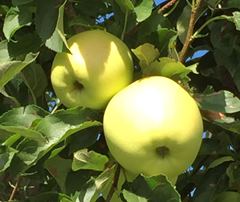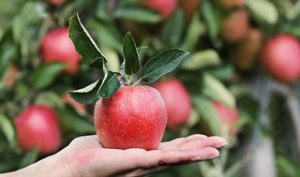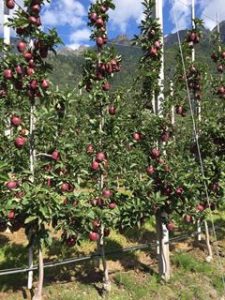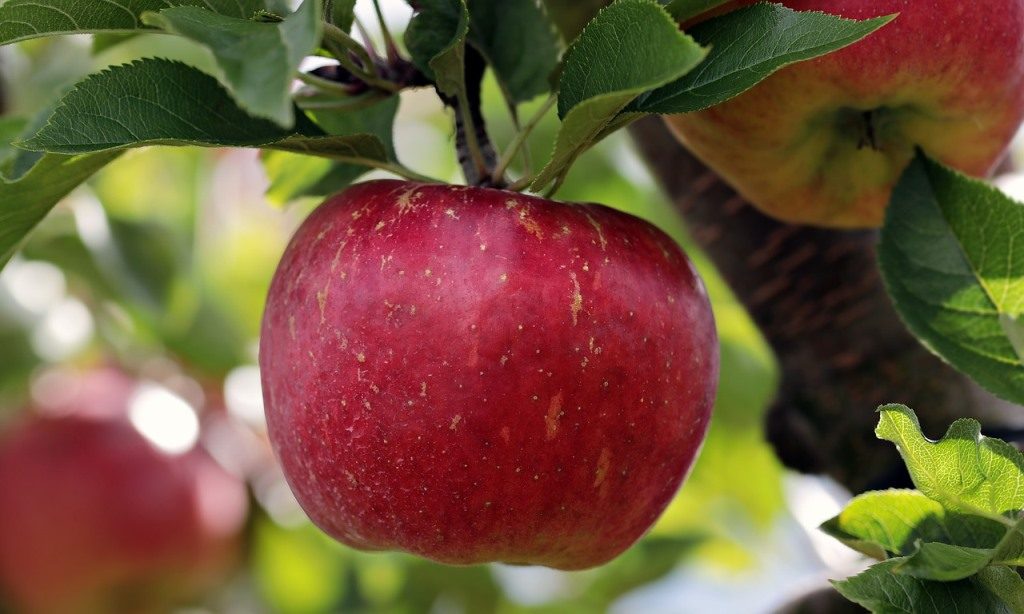 Most of us are familiar with this old proverb. But is there really any truth behind it? And does it also apply to cancer patients? We explore this issue in today’s blog post.
Most of us are familiar with this old proverb. But is there really any truth behind it? And does it also apply to cancer patients? We explore this issue in today’s blog post.
Apples are the most popular type of fruit in Germany, Austria and Switzerland [1, 2]. On average, every German consumes almost 20kg of apples per year [2]. The reason for this, on the one hand, is the great variety of apples available and, on the other hand, the very unique flavour.
The numerous types of apples available in Germany mean there is something to suit every taste – from sweet to sour: Boskoop, Braeburn, Cox Orange, Gala, Golden Delicious, Jonagold… recently a lot of effort has been made to revive the diversity of the varieties available. Prince Charles owns one of the largest collections of apple varieties – cultivating over 1000 varieties.
Health and nutrition
 Apples are low in calories as they are made up of 85% water. 100g apples contains an average 2g of fibre. The German Nutrition Society (DGE) recommends consumption of 30g per day of such indigestible plant fibres. According to a study implemented across Germany to investigate nutrition and consumption (Nationaler Verzehrstudie II), most Germans do not consume as much as this. An apple can make a significant contribution to reaching this goal due to its fibre content [3]. The World Cancer Research Fund (WCRF) also concludes that consuming foods containing dietary fibre probably decreases the risk of colorectal cancer [4].
Apples are low in calories as they are made up of 85% water. 100g apples contains an average 2g of fibre. The German Nutrition Society (DGE) recommends consumption of 30g per day of such indigestible plant fibres. According to a study implemented across Germany to investigate nutrition and consumption (Nationaler Verzehrstudie II), most Germans do not consume as much as this. An apple can make a significant contribution to reaching this goal due to its fibre content [3]. The World Cancer Research Fund (WCRF) also concludes that consuming foods containing dietary fibre probably decreases the risk of colorectal cancer [4].
Apples also contain many important vitamins and minerals such as folic acid, vitamin C [5] and secondary plant substances [6]. These bioactive constituents can have a cancer preventing or cancer fighting effect in a number of ways. This has been outlined in a recent review of existing scientific literature. The analysis has also shown that apples can lower the risk of certain types of cancer such as colorectal cancer [7].
 The ‘Nutrition Report 2012’ cites probable evidence of a link between intake of fruit and vegetables and a lower risk of developing malignant tumours in the upper respiratory tract and upper digestive tract. A study in 2010 revealed probable evidence that the risk of developing cancer decreases marginally when there is a higher intake of fruit and/or vegetables. With regard to eating fruit only, an intake of fruit is probably associated with a reduced risk of malignant tumours of the lung.
The ‘Nutrition Report 2012’ cites probable evidence of a link between intake of fruit and vegetables and a lower risk of developing malignant tumours in the upper respiratory tract and upper digestive tract. A study in 2010 revealed probable evidence that the risk of developing cancer decreases marginally when there is a higher intake of fruit and/or vegetables. With regard to eating fruit only, an intake of fruit is probably associated with a reduced risk of malignant tumours of the lung.
As the most popular type of fruit in Germany, apples therefore really play an important role in preventing and fighting against cancer.
In the kitchen
 Apples can be stored easily, which means they are available all year round. The ideal storage conditions for apples are constantly cool but frost-free temperatures (2 – 6°C). The storage location should also be dark, with a humidity of approximately 85%.
Apples can be stored easily, which means they are available all year round. The ideal storage conditions for apples are constantly cool but frost-free temperatures (2 – 6°C). The storage location should also be dark, with a humidity of approximately 85%.
Apples produce ethylene, a gas which influences the ripening of fruit, and it is released into their surrounding environment. If you place tomatoes which are still green next to apples, for example, they will ripen quicker. It is therefore best to store apples separately.
Whether sweet or savoury, for cooking or baking, apples offer a great source of diversity in our diet. Sour varieties are recommended for sweet dishes and cakes, whereas sweet varieties are ideal for savoury dishes.
You can look forward to one of our forthcoming blog posts and a delicious apple recipe by Veronique Witzigmann.
Sources:
[1] Knasmüller S.: Krebs und Ernährung, Risiken und Prävention – wissenschaftliche Grundlagen und Ernährungsempfehlungen. Stuttgart: Thieme, 2014.
[2] Statista: Pro-Kopf-Konsum von Obst in Deutschland nach Art bis 2015/16, Juni 2017, https://de.statista.com/statistik/daten/studie/247425/umfrage/die-beliebtesten-obstsorten-der-deutschen/ (Zugriff am 27. 10 2017).
[3] DGE: „Ballaststoffe – kein überflüssiger Ballast.“ DGE aktuell, 7. Oktober 2008.
[4] World Cancer Research Fund: „Food, Nutrition, Physical Activity, and the Prevention of Cancer: a Global Perspective.“ American Institute of Cancer Research, Washington, DC, 2007.
[5] Heseker B., Heseker H.: Nährstoffe in Lebensmitteln. Taunus: Umschau Zeitschriftenverlag, 2013.
[6] Tu S., Li-Ching C., Ho Y.: „An apple a day to prevent cancer formation: Reducing cancer risk with flavonoids.“ journal of food and drug analysis 25 (2017): 119-124.
[7] Fabiani R., Minelli L., Rosignoli P.: „Apple intake and cancer risk: a systematic review and meta-analysis of observational studies.“ 19, Nr. 14 (October 2016): 2603-2617.
[8] Bertz H., Zürcher G.: Ernährung in der Onkologie – Grundlagen und klinische Praxis. Stuttgart: Schattauer, 2014.

Pingback: Are apples comparable to pears? | YOU ARE WHAT YOU EAT!